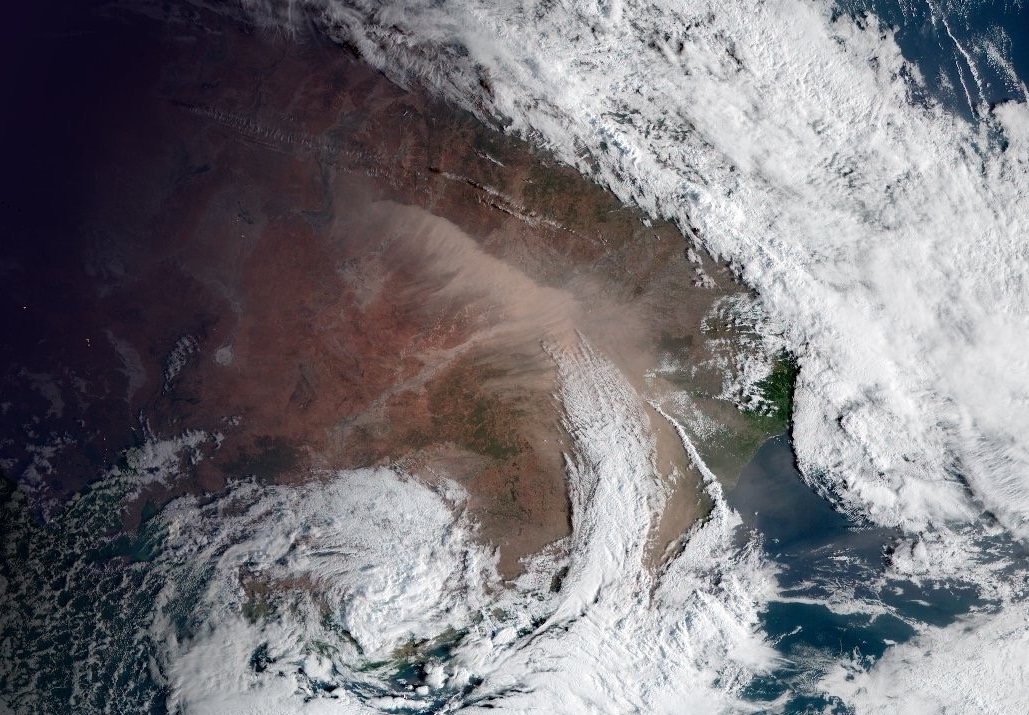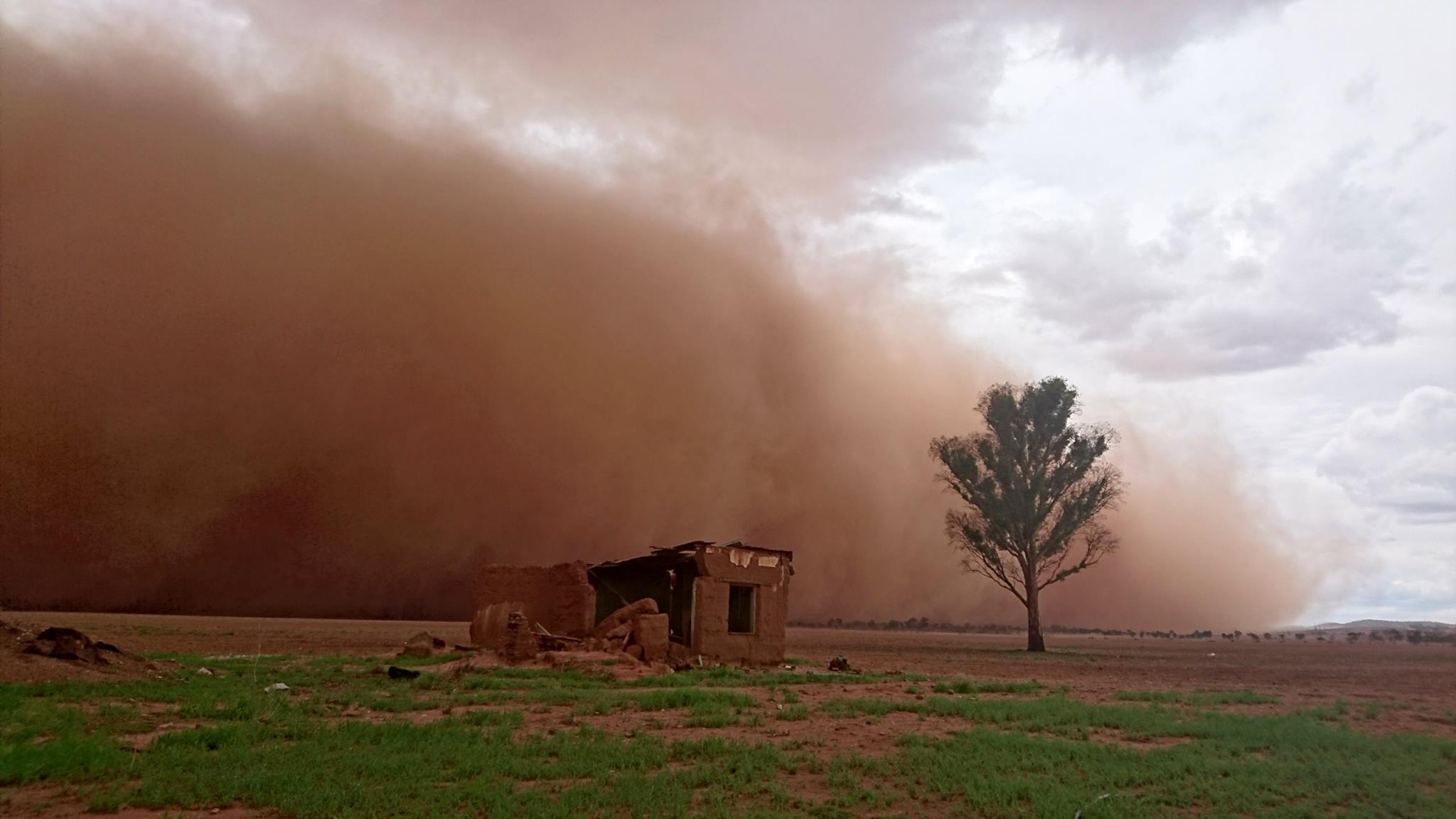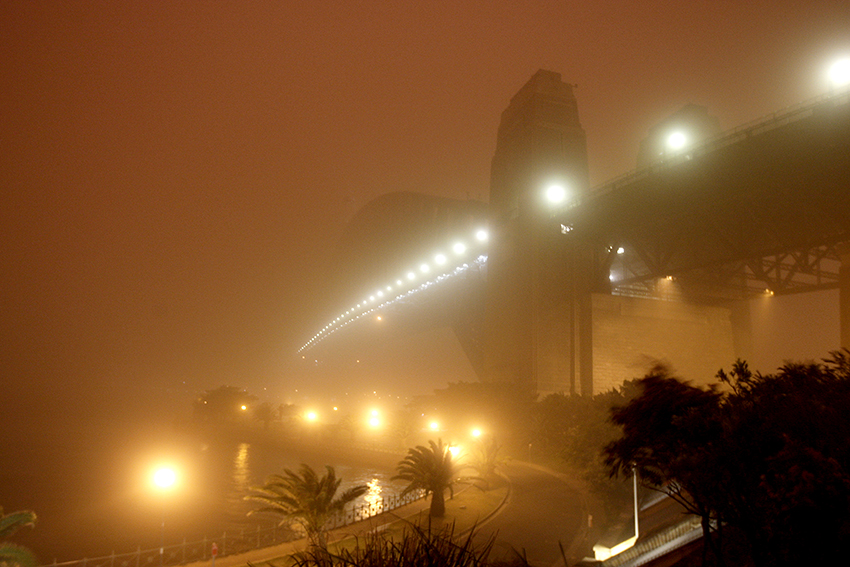Explainer: what is a dust storm?
08 January 2019
Windborne dust is 'business as usual' for those living in arid areas of regional Australia, but when thick dust travels to heavily populated areas that don't usually see it, it's big news—and it can be hazardous. So, what is a dust storm, why do they happen and how can you stay safe if there's one passing through?
A dust storm happens when strong wind picks up dust and dirt from the ground, raises it into the atmosphere and carries it over an extensive area. Dust storms can trigger health problems for some people and cause disruption to transport due to poor visibility.

Image: Satellite image showing a large dust storm blowing through New South Wales on 22 November 2018. Credit: Satellite data supplied by Japan Meteorological Agency
What causes dust storms?
For a dust storm to develop you need four things:
- Strong wind—the wind needs to be strong enough to pick up dust and transport it for long distances. How strong is that? It varies with size of dust particles, but the minimum speed required is around 30 km/h.
- Dry soil—the soil needs to be dry and exposed, so it's loose and susceptible to being picked up by the wind.
- An unstable atmosphere—it's the unstable atmosphere that allows the dust to be raised high and transported long distances, rather than just blowing around at the surface. An unstable atmosphere is often present when there's a trough or strong cold front moving through, or a thunderstorm. It can also occur if the ground is very hot.
- Low moisture in the atmosphere—this means the dust is more likely to stay aloft and travel. If the atmosphere is moist there's a greater chance that moisture will condense onto the dust particles to form cloud or rain (or hail/sleet/snow), or the dust particles clumping together and becoming too heavy to be carried by the wind.
Dust is more likely to be picked up by wind in sparsely vegetated areas where the soil is very dry. Low rainfall leads to dry soil and also means less vegetation is likely to grow, meaning there is less to anchor the dust to the surface.
Dust storms can be large or small. The larger ones tend to be associated with troughs and cold fronts, but the same process can take place at a smaller scale, when the gust front at the head of a thunderstorm lifts the dust.
Dust can travel hundreds of kilometres from its source when it is carried along in strong upper-level winds. Source areas for dust include deserts and dry lakes. For example, when dust affects Sydney, the dust can be carried from as far away as the Strzelecki Desert or Lake Eyre basin in South Australia, or Queensland's Channel Country, while if Melbourne sees dust, it's usually from the Mallee–Riverina region.
Video: In the heart of a dust storm, White Cliffs, New South Wales, 20 November 2018. Credit: Brad Atkins
When are dust storms most likely?
Dust storms are most common in spring because of the cold fronts that move over Australia's southeast and interior. In summer these fronts are generally prevented from moving inland by high pressure systems over the Great Australian Bight and the southeast.
The availability of dust varies from year to year. If rains are good, crops and vegetation grow, meaning soils largely stay on the ground. If they're not, such as during a drought, soil is dry and can be easily picked up by strong wind.

Image: A dust storm rolls through near Freeling, South Australia, 17 March 2016. Credit: Craig Hese
How long do dust storms last?
This can depend on a number of factors. One is the speed the front is moving—the faster it's moving, the faster the dust moves through the area. It also depends on how much dust the front collected. If it only picked up dust from a relatively small area, it is carrying less and is therefore over more quickly.
The small dust storms associated with some thunderstorms may only last half an hour, but big events such as 'Red Dawn' (see below) can last all day.
Sydney's Red Dawn
On 23 September 2009, Sydney residents awoke to a thick red haze blanketing the city—it was a huge dust storm that was quickly dubbed 'Red Dawn'. The dust was so thick that visibility was reduced to below 1 km for four hours, and at the peak of the storm you could only see 400 m. The massive dust storm was 3000 km long and 2500 m high. It affected as far north as Cairns and dust from it settled as far away as New Zealand! The storm is estimated to have carried approximately 15 million tonnes of dust at its peak.
This event was caused by extreme wind in western New South Wales, coupled with drought. The winds (reaching 80–100 km/h) were caused by a cold front and a deep low pressure system.
The dust that shocked Sydneysiders, disrupted flights and ferries, and caused road closures had travelled 700–1200 km. Its source was the red sand plains of western New South Wales; the sand plains, riverine channels and lakes of the lower Lake Eyre Basin; and Queensland's Channel Country.
Red Dawn is particularly memorable, but Sydney has experienced a number of notable dust storms, including one of comparable severity in 1942 that reduced visibility at the airport to 500 m.

Image: Sydney Harbour Bridge during Red Dawn, 5.32 am 23 September 2009. Credit: John Grainger
Safety in a dust storm
Dust storms can have serious effects on people's health, particularly those with breathing-related issues, and infants, children, adolescents and elderly people.
Dust storms can also limit visibility, affecting road and air travel.
To protect yourself during dust storms, follow the advice of your local health authority and:
- stay inside (preferably in an air-conditioned environment) with the doors and windows closed;
- If you go outside, consider wearing a protective face mask (P2 or P3 from a hardware store) or covering your nose and mouth with a damp cloth;
- if you're driving and visibility drops, slow down or pull over somewhere safe; and
- on the road, set your ventilation to 'recirculate' to reduce the amount of dust entering the car.
For more health information, please see the NSW Government Department of Health dust storm fact sheet.
How will I know if a dust storm is coming?
Keep an eye on the weather forecast for your area. If dust is likely to be an issue, we include mention of raised dust. You may also see references to 'dust haze'. This means there will be dust around, but not at the same concentration that dust storm brings, so it's less likely to cause health problems or affect visibility.
Our specialised forecasts for the aviation industry also include information about dust storms. Just like fog, thick dust hampers visibility for pilots, which may mean grounded flights, closed airports and changing schedules ahead of time so passengers can prepare for a delay. Dust can also cause damage to aircraft engines.
More information
Community DustWatch (NSW Government Office of Environment and Heritage)


Comment. Tell us what you think of this article.
Share. Tell others.